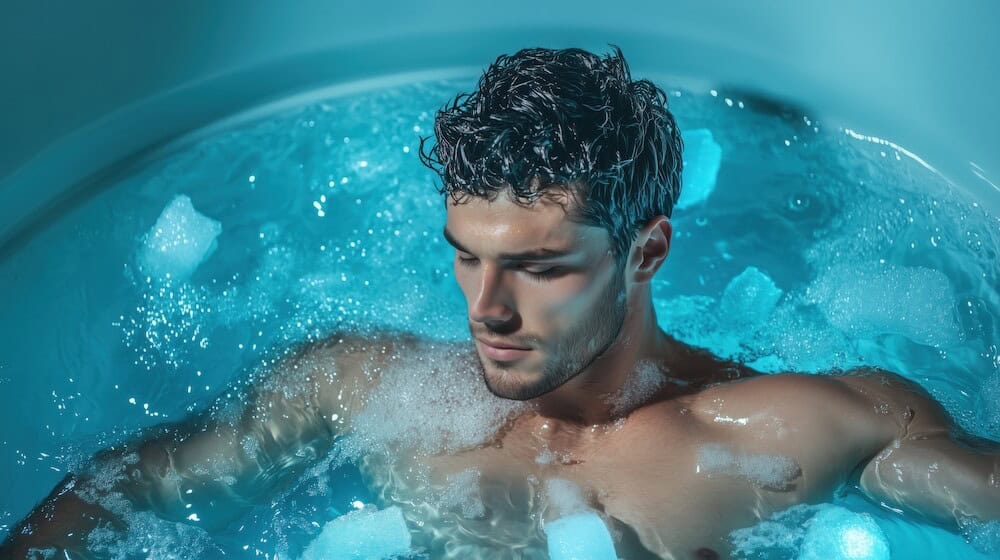Cold Plunge FAQs: What It Is, Why It Helps, How to Start
Cold plunging (also called cold-water immersion) means briefly immersing your body in cold water, typically around 37-55°F, for three to five minutes at a time. This practice has surged in popularity for its touted health benefits. Experts at Greentoes North in Tucson say cold plunges can ease sore muscles and inflammation, sharpen focus, and even lift mood. Starting small and staying safe makes it a powerful wellness habit.
Overall Cold Plunge Benefits
Does a cold plunge speed up muscle recovery?
Cold plunges constrict blood vessels, reducing swelling and soreness after tough workouts. This vasoconstriction slows blood flow and relieves swelling and soreness in sore muscles. Many athletes use ice baths post-exercise because this helps tissues recover faster. Studies have consistently found that cold water immersion after exercise speeds recovery and reduces muscle damage.
Does a cold plunge reduce inflammation?
Immersion in cold water can help reduce inflammation throughout the body. By numbing nerve endings and constricting blood vessels in the skin and muscles, an ice bath helps minimize swelling. It also appears to mitigate general inflammatory responses, which can help alleviate aches and joint pain.
Can a cold plunge improve circulation?
The sudden cold causes your blood to rush to your core to protect vital organs, then flow back to your limbs as you warm up. This cycle of constriction and dilation enhances long-term circulation. Improved blood flow can lead to healthier tissues and faster healing.
Does a cold plunge support immune function?
Regular cold exposure may rev up your immune system. Cold plunges stimulate the production of immune cells and may enhance the body’s ability to fight infections. Short cold dives can raise white blood cell counts and immune activity.
Does a cold plunge lower resting heart rate over time?
Cold plunges challenge your cardiovascular system in a controlled way. The initial cold shock raises heart rate and blood pressure briefly, which, over time, can help the body adapt and rest more easily. Many practitioners report becoming calmer and less anxious with regular use. If you have heart issues or concerns about your blood pressure, always consult your doctor first.
Can a cold plunge sharpen mental focus?
Many people feel alert and energized after a cold dunk. The shock of cold water triggers a surge of feel-good chemicals, such as endorphins and norepinephrine, which boosts mood and mental clarity. Cold exposure can lower stress hormones over time and improve resilience to stress. A cold plunge can jolt you awake and give you a natural rush.
Does a cold plunge improve sleep quality?
A cold plunge at the right time may help you sleep. The body normally cools slightly before sleep; an evening cold dunk can mimic this dip and promote deeper sleep for some people. Many practitioners find that ending a session with gentle cooling down leads to restful sleep.
Cold Plunge Frequency and Duration
How often should I do a cold plunge?
Most experts advise moderation. Two to four sessions weekly is a great starting range. If you’re new, start with one or two times per week so your body can adapt slowly.
Is a daily cold plunge safe?
It can be safe to plunge every day if you’re healthy. Daily cold dips are generally okay, but plunging immediately after every workout might dampen strength gains.
How many times per week is ideal for cold water immersion?
Two to four times per week balances benefits without overstressing the body. Athletes or those with high training loads sometimes do cold plunges four to five times a week to aid recovery.
How long should I stay in a cold plunge?
Beginners often start with 30 seconds to 2 minutes. Over time, you can gradually go longer as tolerance builds. For most people, 5-10 minutes is ample even at colder temperatures.
Are two short plunges better than one long plunge?
There’s no strong evidence favoring one over the other. Whether one continuous plunge or two quick ones, keep the total time and safety guidelines the same and watch for signs of over-chill.
How soon can I do a second plunge in the same day?
Wait a couple of hours after the first session, warm up fully, and rehydrate before plunging again. Most experts recommend spacing sessions by at least a couple of hours.
Timing in the Day
Is it better to do a cold plunge in the morning or at night?
A cold plunge in the morning can be invigorating. Evening plunges have mixed effects; some find an evening cold bath helps them relax and improves sleep, while others feel too stimulated if plunging right before bed.
Should I cold plunge before or after a workout?
Cold plunging after workouts is most common to ease soreness. Immersing right after exercise soothes inflammation and jump-starts the repair process. Plunging before exercise is less common and usually not necessary.
Does an evening cold plunge disturb sleep?
If you plunge too close to bedtime, you’ll need to warm back up first, which might wake you up. Try plunging for an hour or two before bed, then gradually warming up with dry clothes or a warm drink.
Can an early-morning cold plunge replace coffee?
A cold plunge often gives an energizing rush thanks to adrenaline and neurochemicals. It reliably wakes up the body and brain, making it a popular natural alternative to coffee in the morning.
Cold Plunge Temperature Guidelines
What temperature is best for a cold plunge?
Most sources recommend keeping the water between 37-55°F. This range is cold enough for full benefits without excessive risk.
How cold is too cold for beginners?
Beginners should start at a temperature closer to 55°F and gradually lower it as they adapt. Below about 50°F, the cold shock intensifies sharply.
Does a colder plunge give greater benefits?
Colder water triggers a more pronounced stress response. However, below 50°F, risks jump sharply. Fifty degrees is sufficient to trigger the desired health effects.
Is 50°F cold enough for results?
Yes, 50°F is plenty cold to get results. It triggers the necessary physiological responses without being dangerously extreme.
At what temperature can a cold plunge become risky?
Water colder than about 40°F carries more risk. Always check your plunge temperature carefully.
Preparation and Technique
How do I prepare for a cold plunge?
Be well-hydrated and have eaten a light meal or snack. Avoid plunging on an empty stomach or immediately after a heavy meal or alcohol.
Should I warm up first?
A quick, light warm-up can raise your body temperature slightly. You don’t need intense exercise, just enough to feel comfortably warm.
Do you wear clothes in a cold plunge?
It’s fine to wear a swimsuit or lightweight workout clothes during a plunge. Clothes help temper the initial shock and make you feel more comfortable.
What should I breathe like during a plunge?
Take slow, deep breaths. Inhale through your nose and exhale gently through your mouth to calm your nervous system.
Should I shower before a cold plunge?
A quick warm shower beforehand washes away lotions, sweat, or chlorine. Showering gently raises your core temperature, making the cold feel less intense.
Is it better to plunge with or without socks and gloves?
Neoprene socks and gloves can provide warmth and grip, making plunges more comfortable. They are optional and depend on personal preference.
Post-Plunge Routine
How should I warm up after a cold plunge?
Warm gradually. Dry off and dress warmly right away. Sip a warm drink and avoid immediate hot showers or saunas.
Should I stretch after cold water immersion?
Light stretching or yoga poses can help move warmed blood back into muscles and limbs. Keep it easy and painless.
Is it helpful to add light exercise after a plunge?
Mild activity like walking or gentle squats helps warm you up. Taking a short walk and then returning to warmth raises your body temperature gradually.
Do I need a hot shower right away?
You do not need a hot shower immediately. Wait 10-20 minutes after the plunge to allow your body to naturally re-equilibrate. Then, a comfortably warm shower is fine.
Ready to feel recharged, clear-headed, and more resilient?
Overall, think of cold plunging as a process. Prepare well, ease into the cold, pay attention to your body’s signals, and warm back up sensibly. Follow these guidelines, and you’ll enjoy all the benefits of cold-water therapy safely. Remember to consult a doctor if you have heart or blood pressure issues and always start cautiously. Done correctly, a cold plunge can become a refreshing habit that boosts recovery, mood, and health, one dip at a time.
Schedule your cold plunge session at Greentoes North in Tucson and experience the benefits for yourself. Our team provides a calm, supportive space where you can ease into the water with confidence. Whether you’re recovering from workouts, managing stress, or simply craving a reset, cold plunge therapy at Greentoes North is your invitation to feel better naturally.

